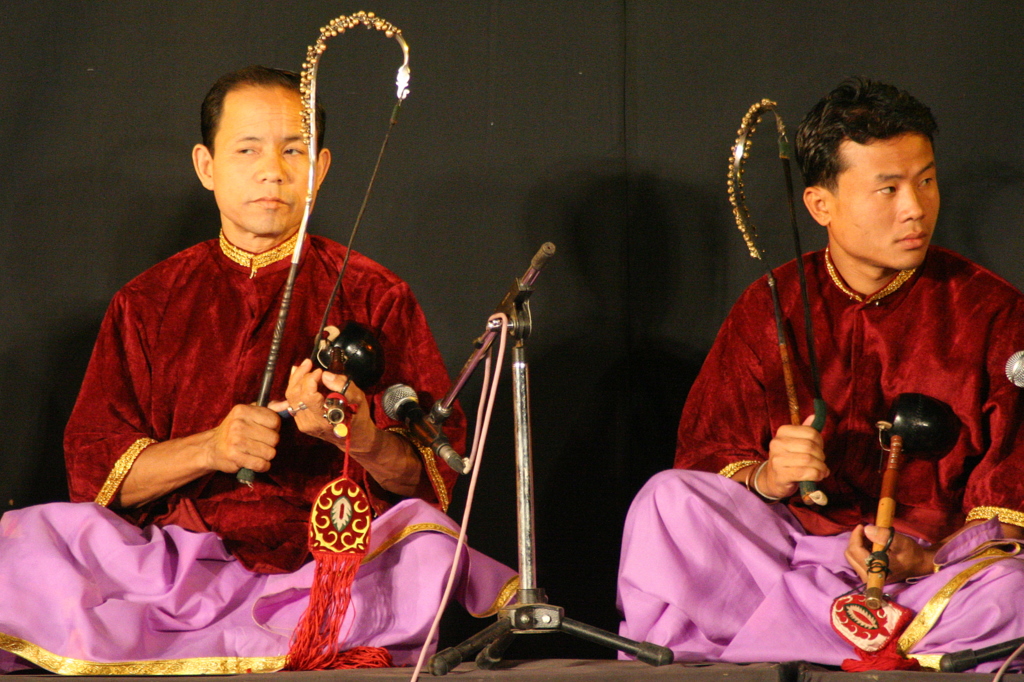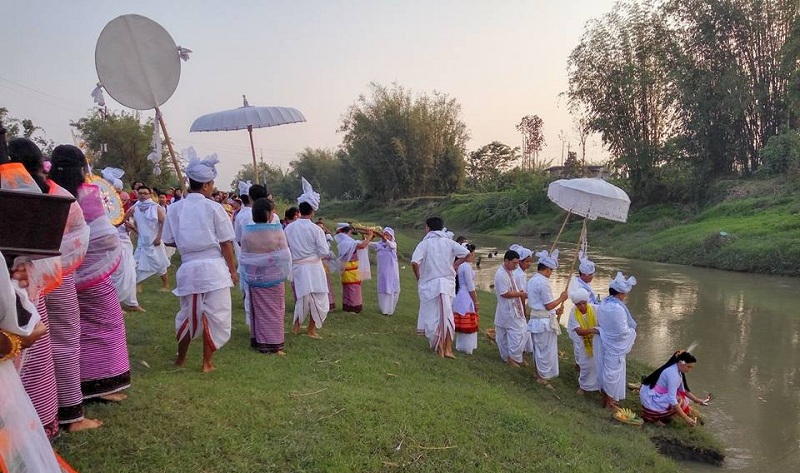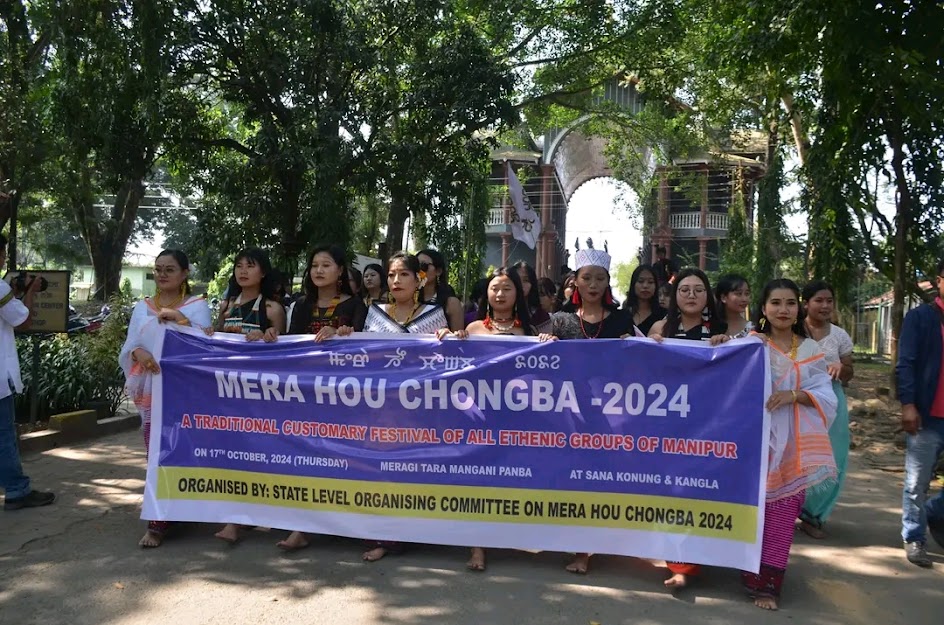Among the Kharam’s cherished traditions is the Mu Ka Da festival, celebrated annually on the second Monday of May. This vibrant event signifies the culmination of the agricultural cycle, marking the completion of seed sowing. More than an agricultural ritual, Mu Ka Da symbolizes the tribe’s enduring connection to nature, community, and their ancestors—a connection that has withstood the pressures of modernization and religious transformation.
The Kharam tribe, a recognized Scheduled Tribe of Manipur, represents a small yet culturally rich indigenous community. With a population less than 2000, they reside in villages such as Kharam Pallen, Kharam Khullen, and Laikot Kharam, primarily speaking a Tibeto-Burman language alongside Meitei as a second language. The tribe has a deep ethno-historical connection to ancient principalities like Moirang, underscoring their role in Manipur’s cultural history.
The Performance of Mu Ka Da
Mu Ka Da begins at dawn with the traditional prayer known as ‘Rathakokoi,’ a ritual performed by village elders. Historically, Rathakokoi was a polyphonic chant, invoking ancestral spirits and nature deities to bless the fields and ensure a prosperous harvest. Today, this ritual often takes the form of Christian prayers, yet two non-convert elders continue to uphold the traditional hymns. Conducted in a courtyard adorned with natural offerings like flowers, grains, and water, this prayer serves as a solemn invocation of purity and connection to the earth.
The festival then unfolds into a bustling communal effort. Women take central roles, meticulously cleaning their homes, brewing beverages like ‘Wai Yu’ (country brew) and ‘Puk Yu’ (rice beer), and preparing food for the feast. Brewing is more than a culinary skill among the Kharam; it is considered a sacred art entrusted to women by ancestral spirits. The craft not only honors the community but also pays homage to divine traditions, with the best brewers celebrated for their talent.
The main event takes place in the afternoon in the village’s communal space, often a central courtyard or sacred grove. Elders lead offerings of ‘Wai Yu’ and ‘Puk Yu’ to ancestral spirits and nature deities, pouring libations to seek their continued protection over the crops and community. This act of gratitude mirrors practices among other Manipur tribes, such as the Zeliangrong and Kabui, who also offer rice beer and millet wine during their ceremonies.
Traditional dances and folksongs add vibrancy to the festivities. Elders play instruments like the ‘Sarangdar,’ a wooden string instrument crafted from trees, cane, bamboo, and leather, producing melodies that invoke ancestral spirits. The community dances in rhythmic patterns that mimic agricultural cycles, connecting their movements to sowing and reaping. These dances transcend mere entertainment, acting as spiritual dialogues with the natural and ancestral realms.
A unique feature of Mu Ka Da is the invitation of married daughters to their ancestral homes for a grand luncheon. This tradition reinforces familial bonds and spiritual harmony, as daughters offer prayers for prosperity and health in return for being honored at the feast. This practice mirrors the Ningol Chakouba and similar reunions among other tribes in Manipur.
The festival concludes with a communal feast where stories of ancestors, heroes, and nature are shared. Folklore and legendary songs, like those of Paruisam—renowned for his mystical connection to ancestral deities—are performed, keeping oral traditions alive despite the challenges posed by younger generations’ disinterest.
Cultural Practices and Beliefs
Beyond Mu Ka Da, the Kharam tribe engages in various cultural practices that define their identity. Their dances, such as the Insak Khare performed by women, and their brewing traditions underscore their craftsmanship and communal unity. Oral traditions, which include storytelling and songs, play a vital role in preserving the tribe’s values and history, ensuring their heritage is passed down.
The tribe’s beliefs surrounding Mu Ka Da embody a blend of traditional animistic faith and modern Christian influences. Traditionally, the Kharam viewed the festival as a sacred covenant with ancestors and nature deities, whose protection was critical for agricultural success and community well-being. Today, many within the community approach Mu Ka Da through a syncretic lens, integrating Christian elements while striving to maintain its cultural essence.
Despite these shifts, traditionalists argue that neglecting ancestral rituals risks disrupting harmony with nature—a sentiment echoed by other tribal groups such as the Zeliangrong. Younger generations, though often disconnected from the spiritual aspects, increasingly view Mu Ka Da as a cultural symbol and a way to resist the homogenizing forces of globalization.
Challenges and Resilience
The survival of Mu Ka Da faces numerous challenges, including urban migration, resource depletion, and declining interest among the youth. For instance, the depleting ‘wang’ tree and the extinct otter populations, essential for crafting the Sarangdar, highlight the ecological pressures on traditional practices. Additionally, the lack of state recognition for the festival poses a barrier to its preservation.
Nevertheless, the Kharam tribe continues to celebrate Mu Ka Da with resilience and dedication. By valuing their traditions and adapting them to modern contexts, they ensure that the festival remains a vital expression of their identity and connection to Manipur’s cultural tapestry.
Conclusion
Mu Ka Da is more than an agricultural festival; it is a profound embodiment of the Kharam tribe’s heritage, spirituality, and communal harmony. Its blend of tradition and adaptation highlights the tribe’s ability to navigate the complexities of modernity while remaining anchored to their roots. As Manipur’s ethnic tapestry evolves, Mu Ka Da stands as a testament to the power of cultural preservation in fostering unity and identity.
The Kharam tribe holds immense pride in its cultural wealth, encompassing folk dances, music, and customs that have been handed down through generations. Their dedication to preserving and promoting these traditions is a testament to their respect for their heritage.
Passed down from one generation to the next, this festival form remains a vibrant part of Kharam’s cultural identity today. Many young Kharam researchers has vowed to safeguard and nurture this cherished tradition, ensuring it continues to flourish for the benefit of future generations.
Image credit – Google
(C) Naorem Mohen
The Writer can be reached at Twitter @laimacha
Editor | Signpost News







